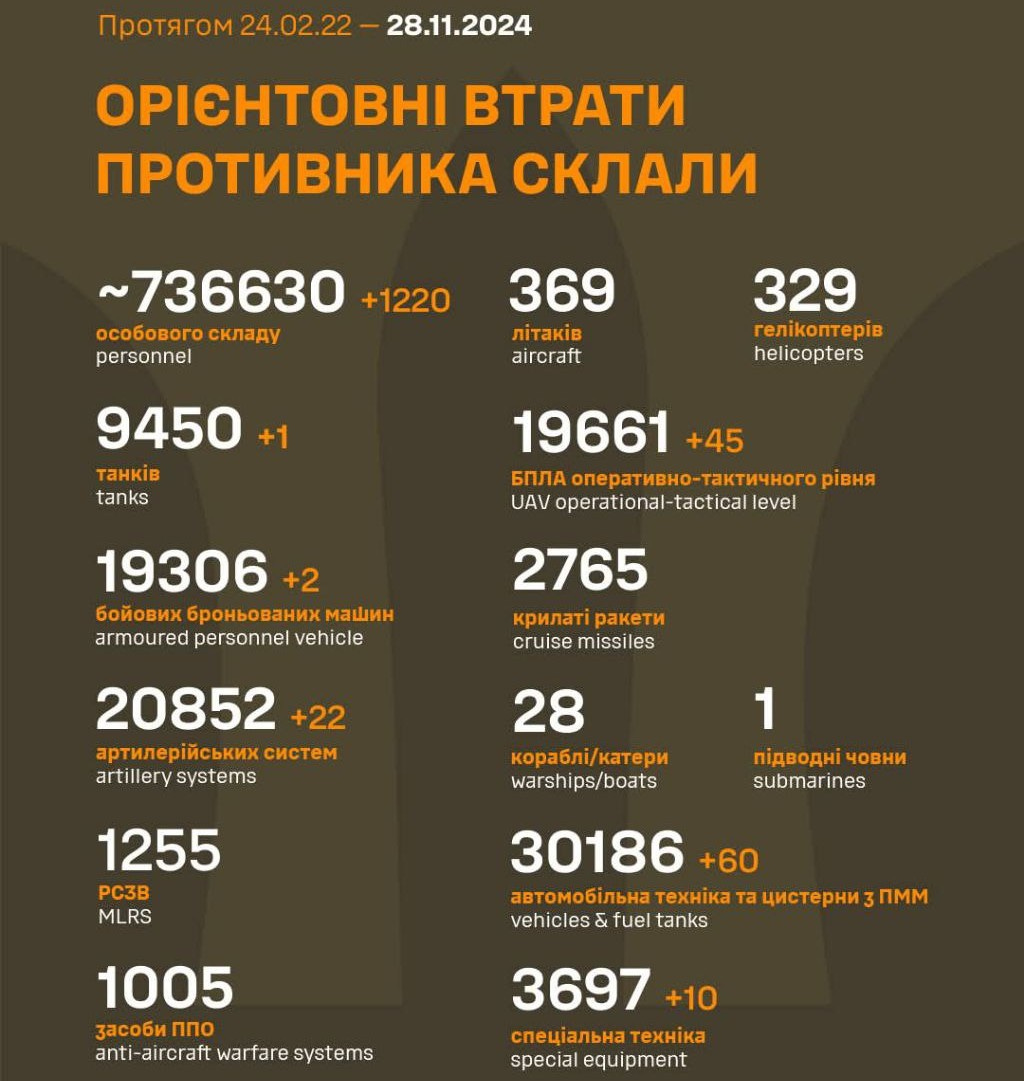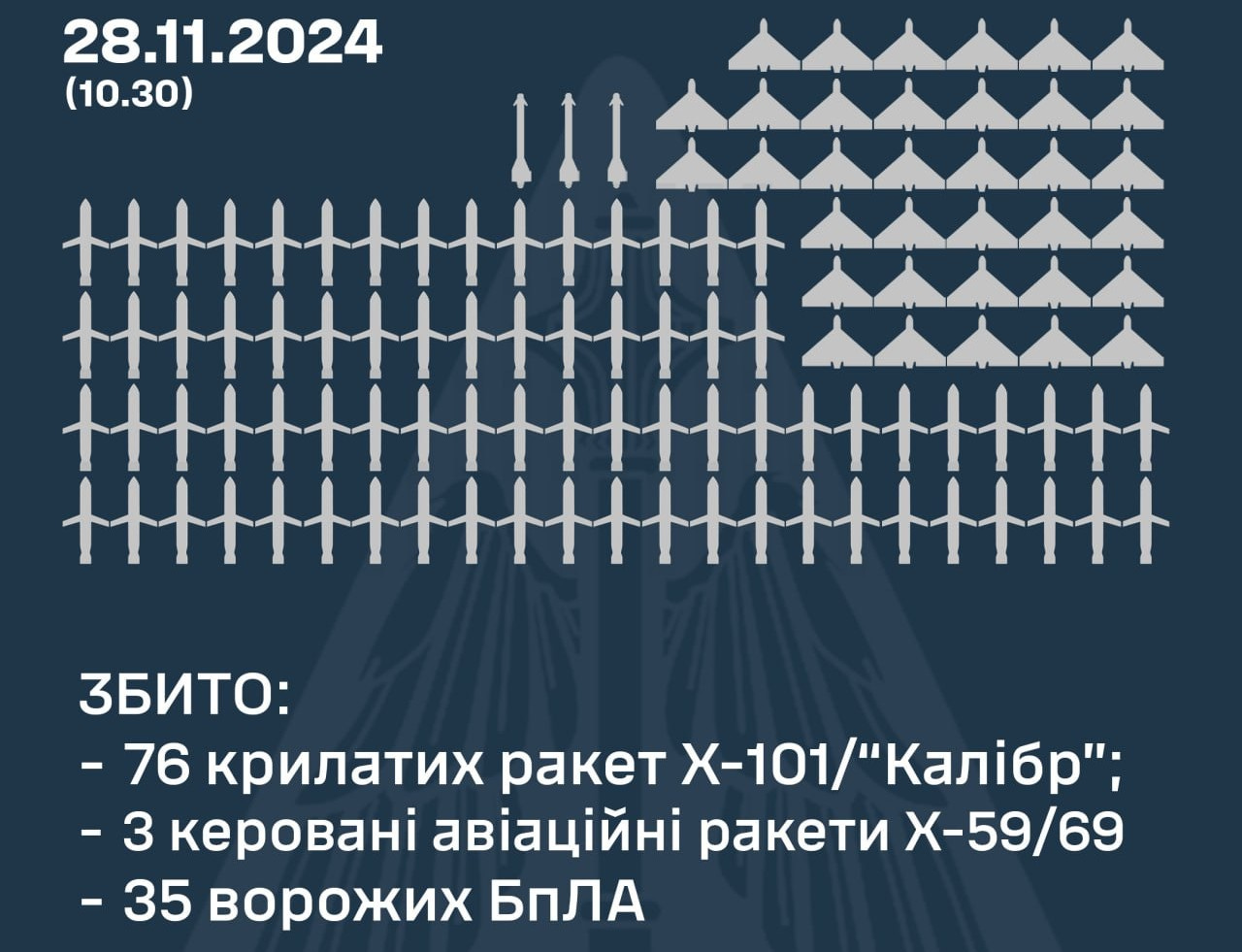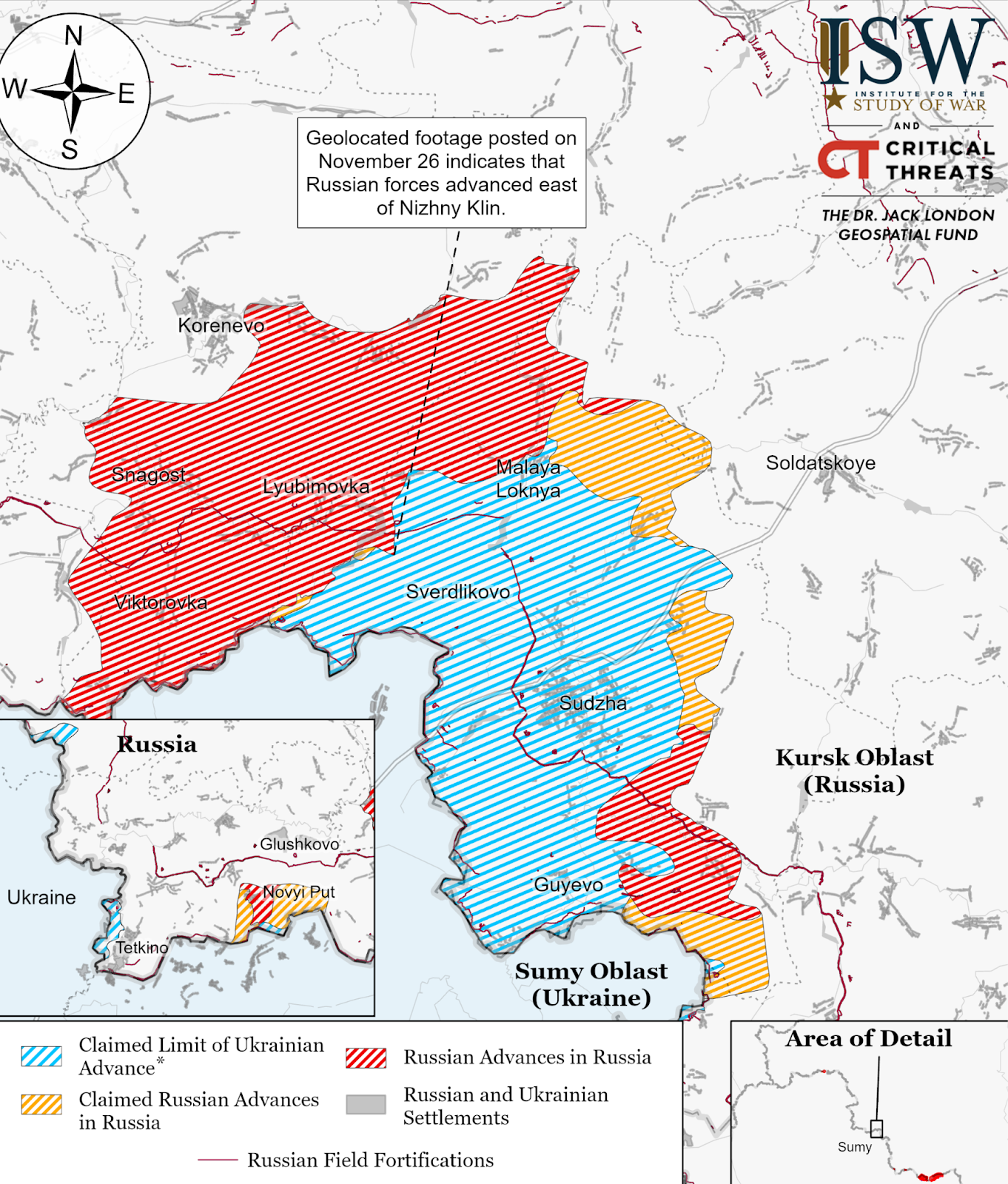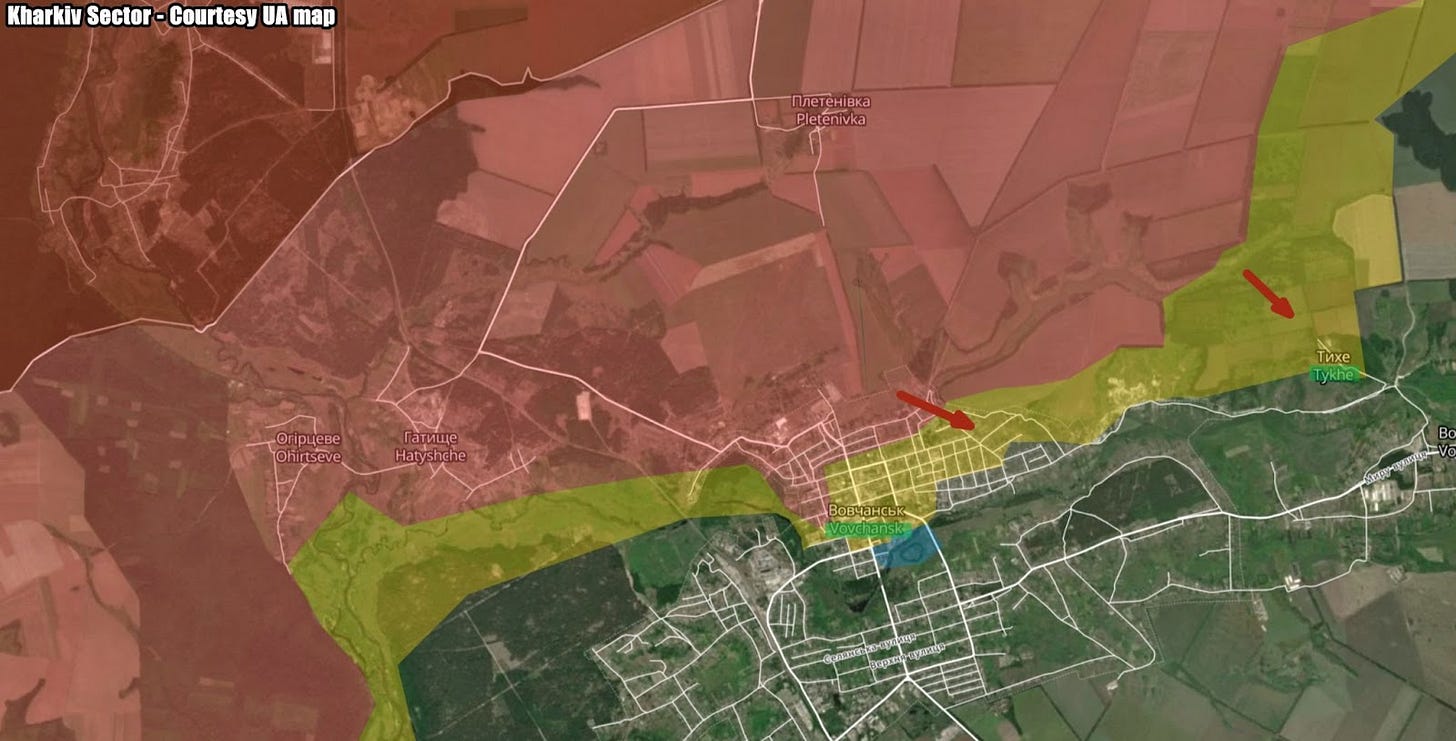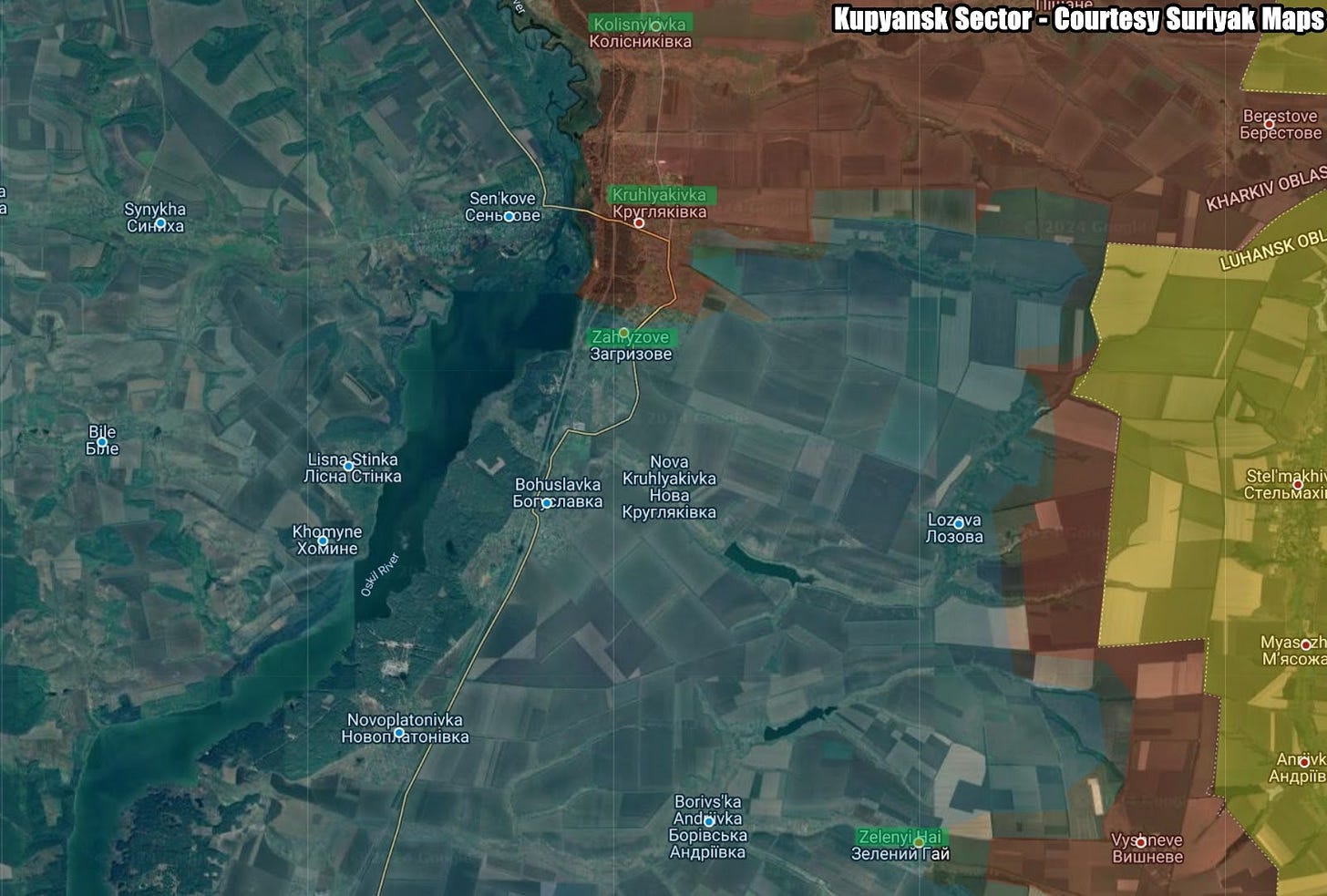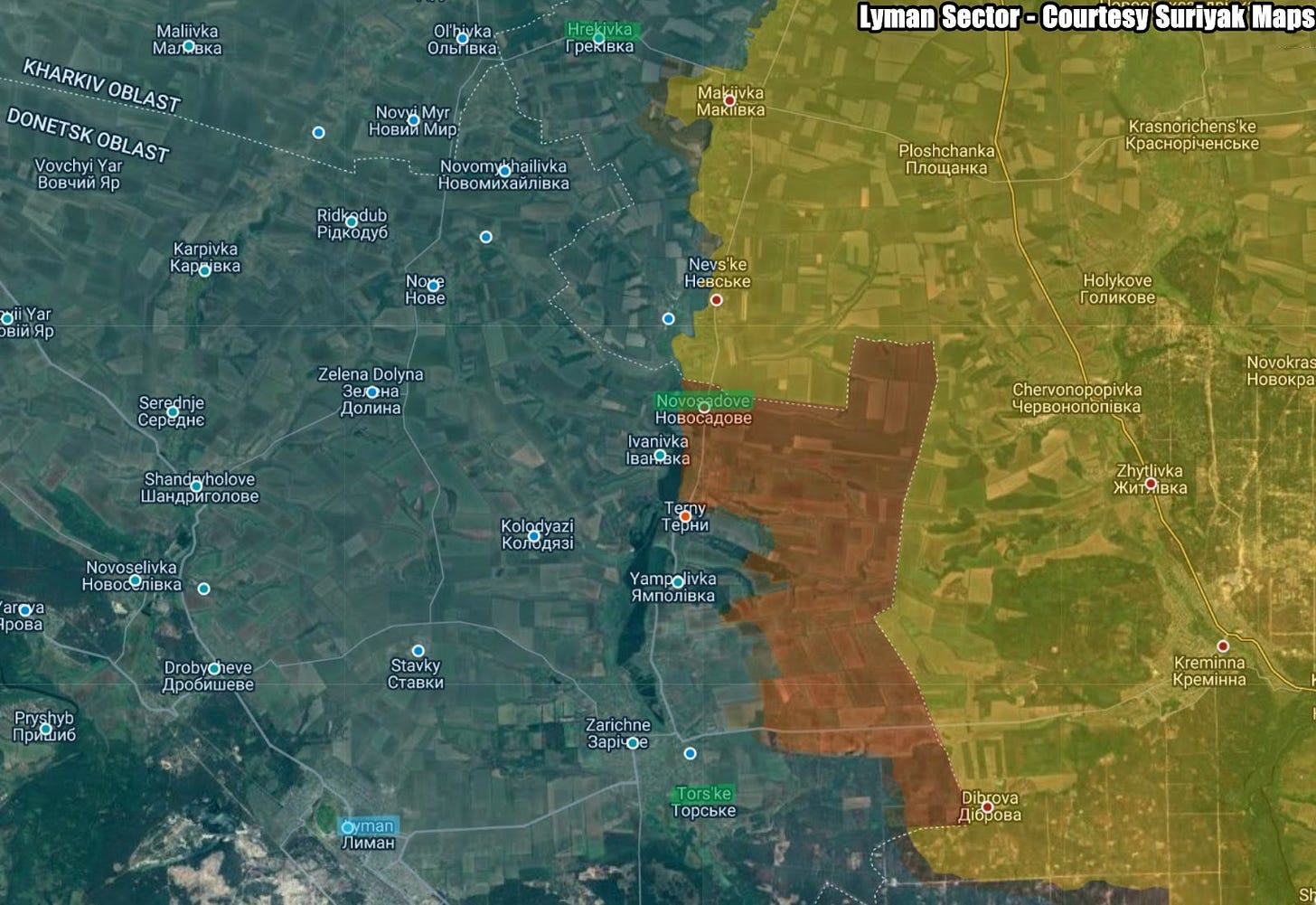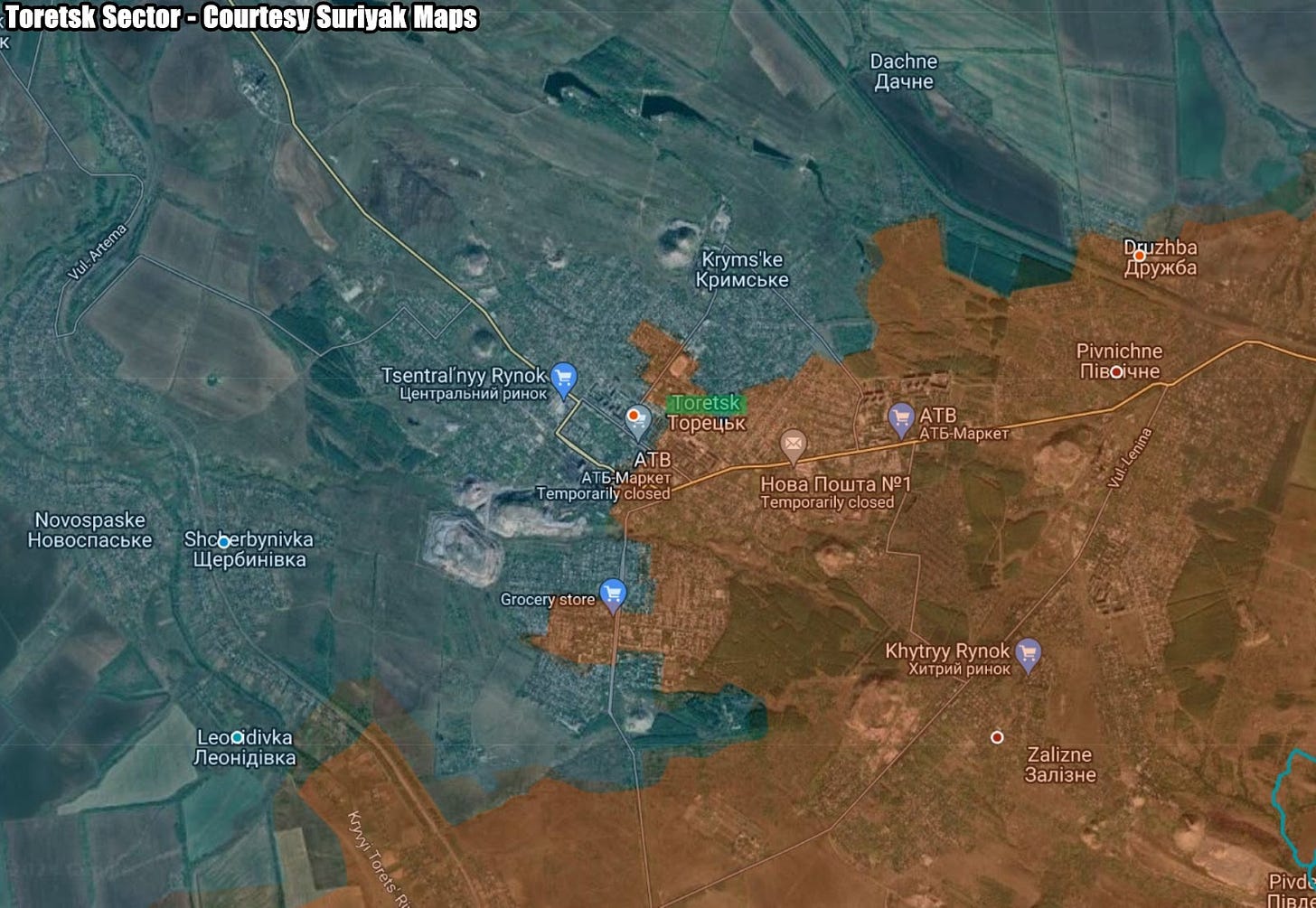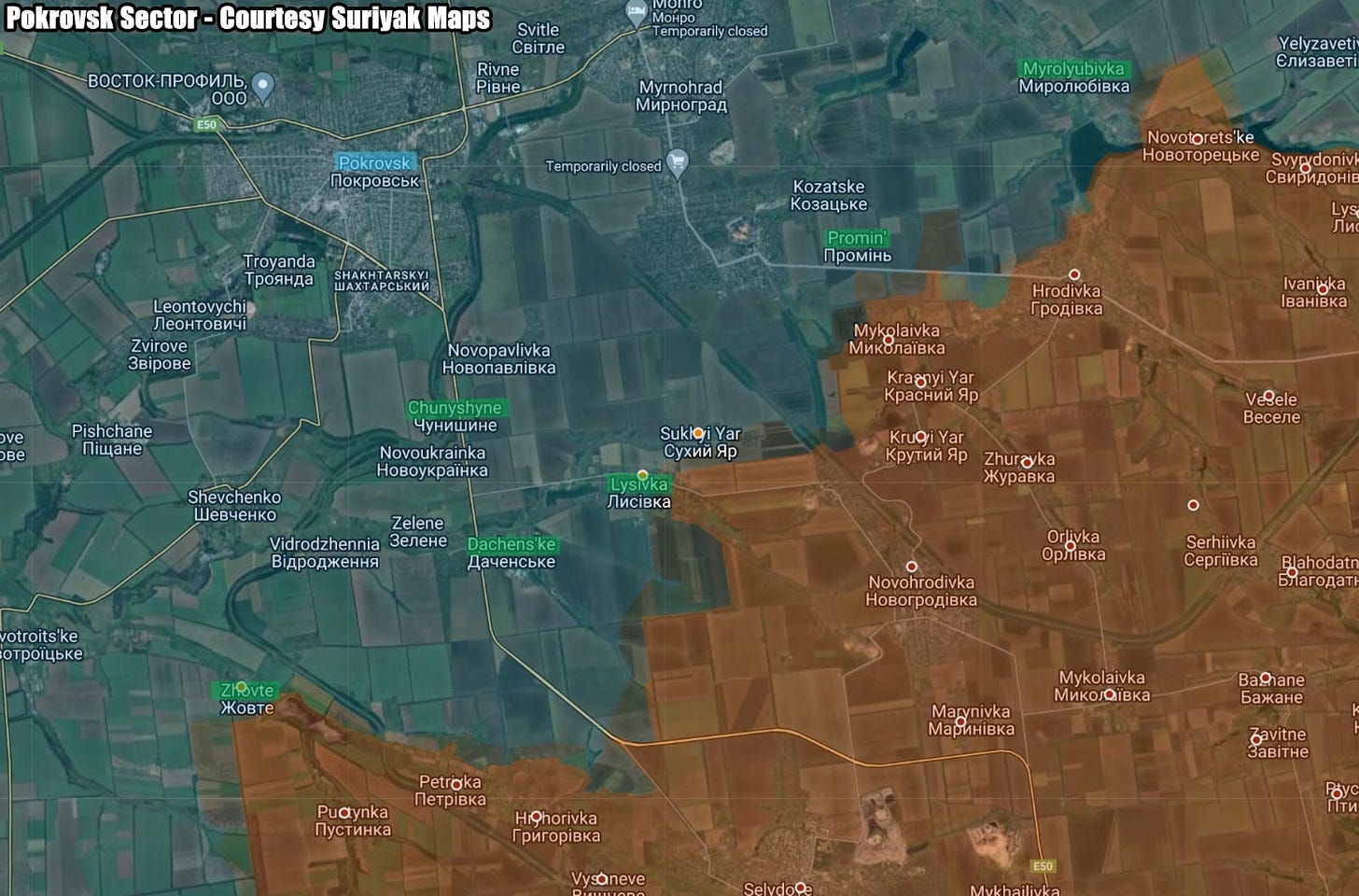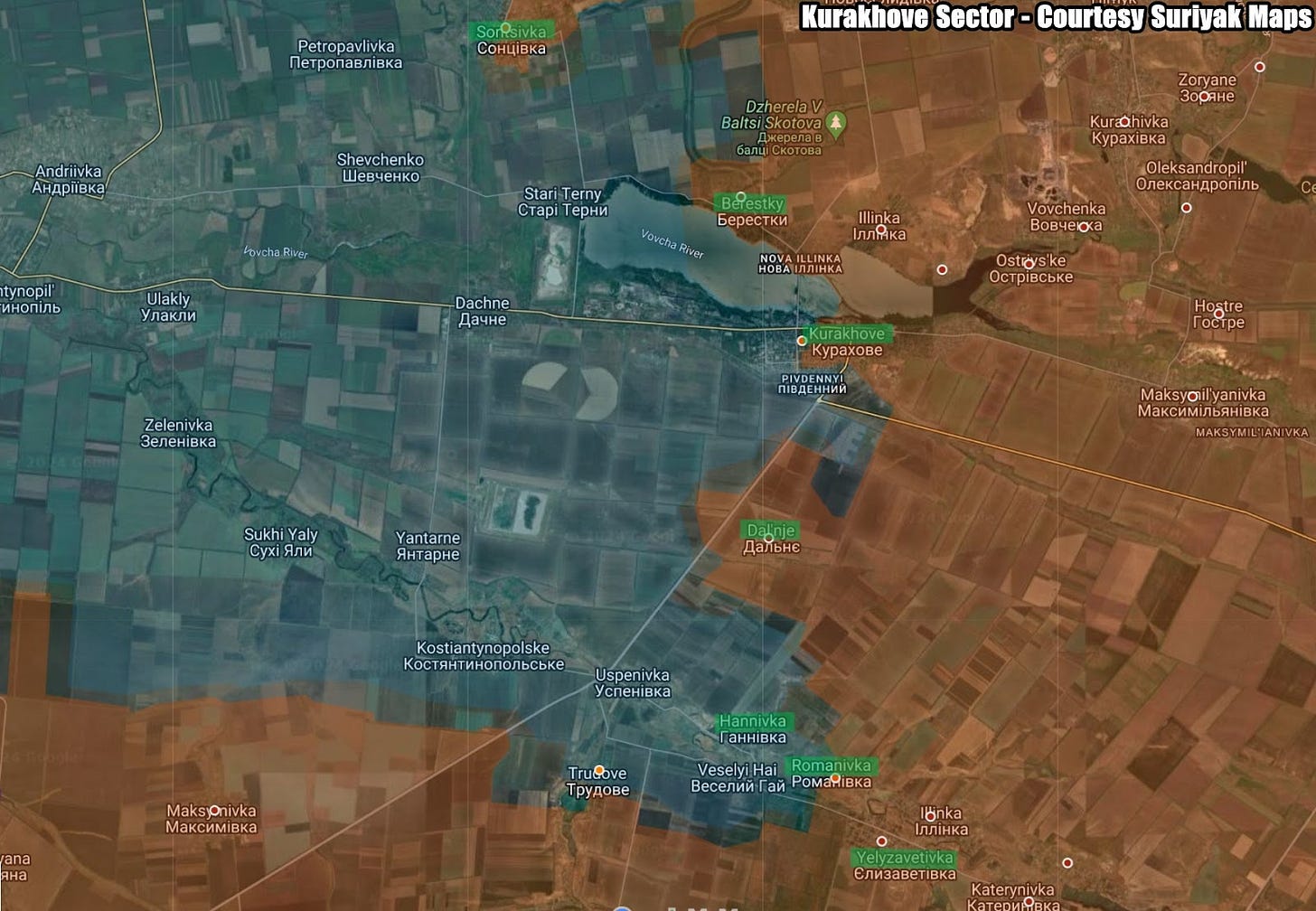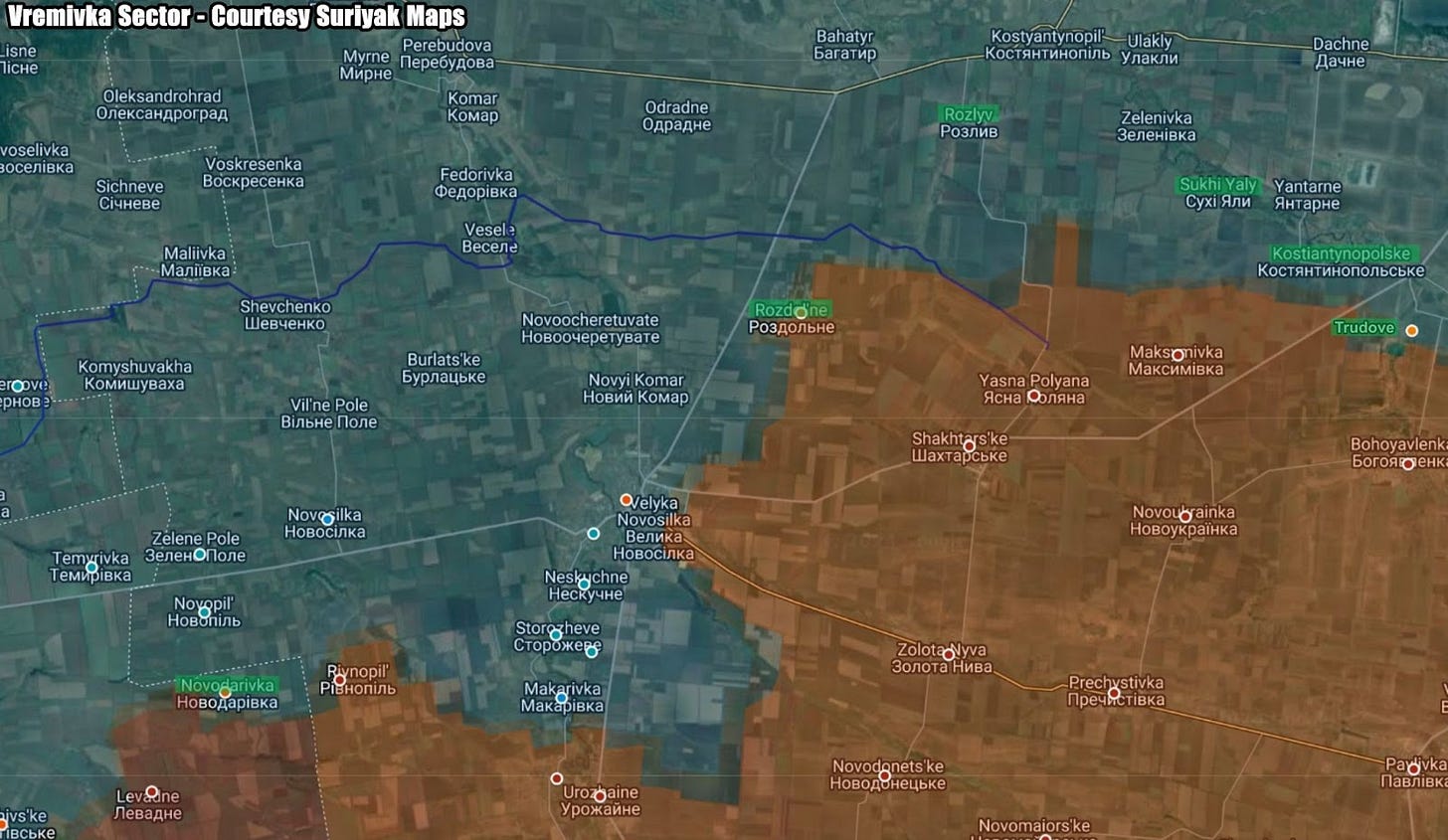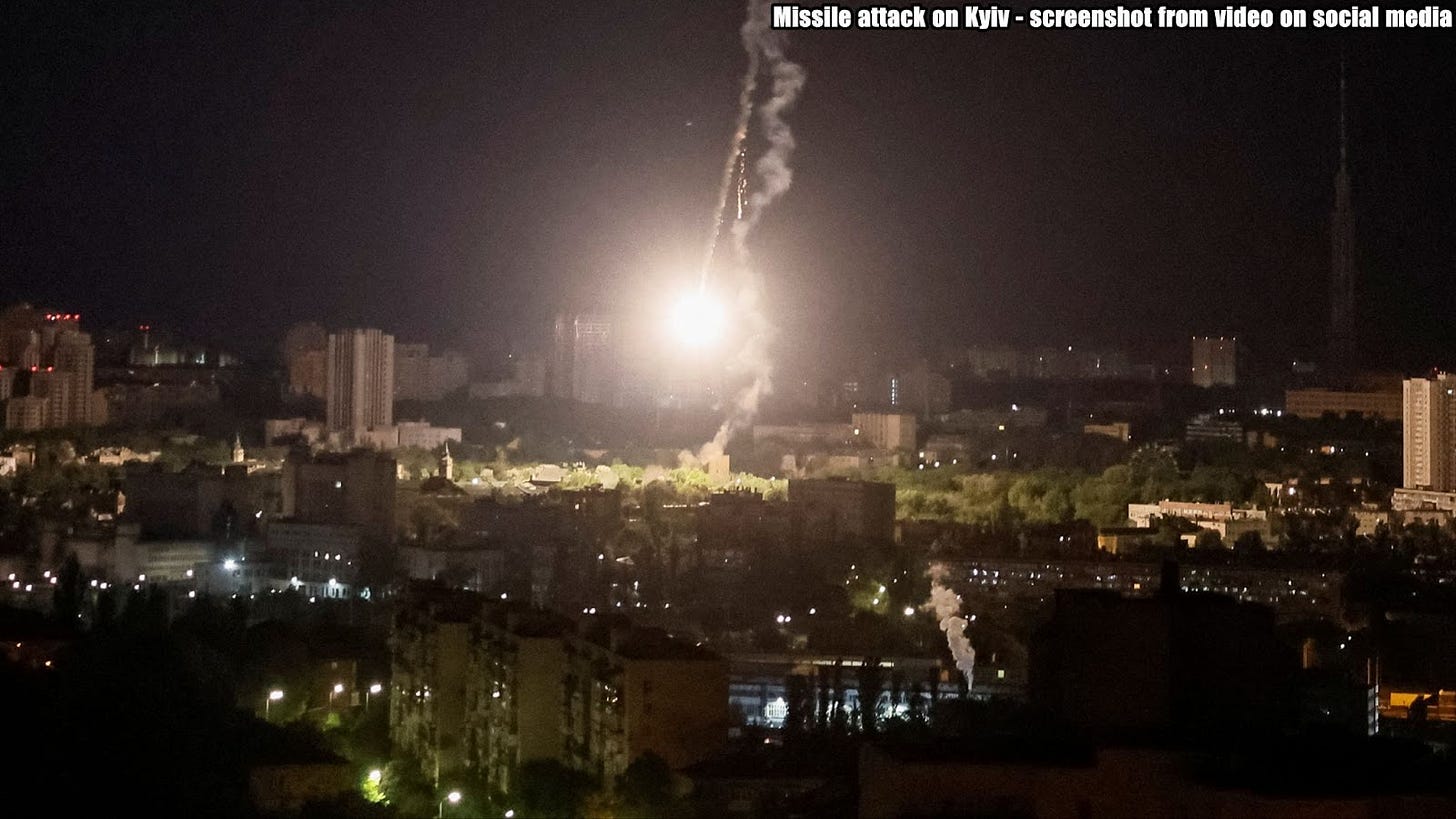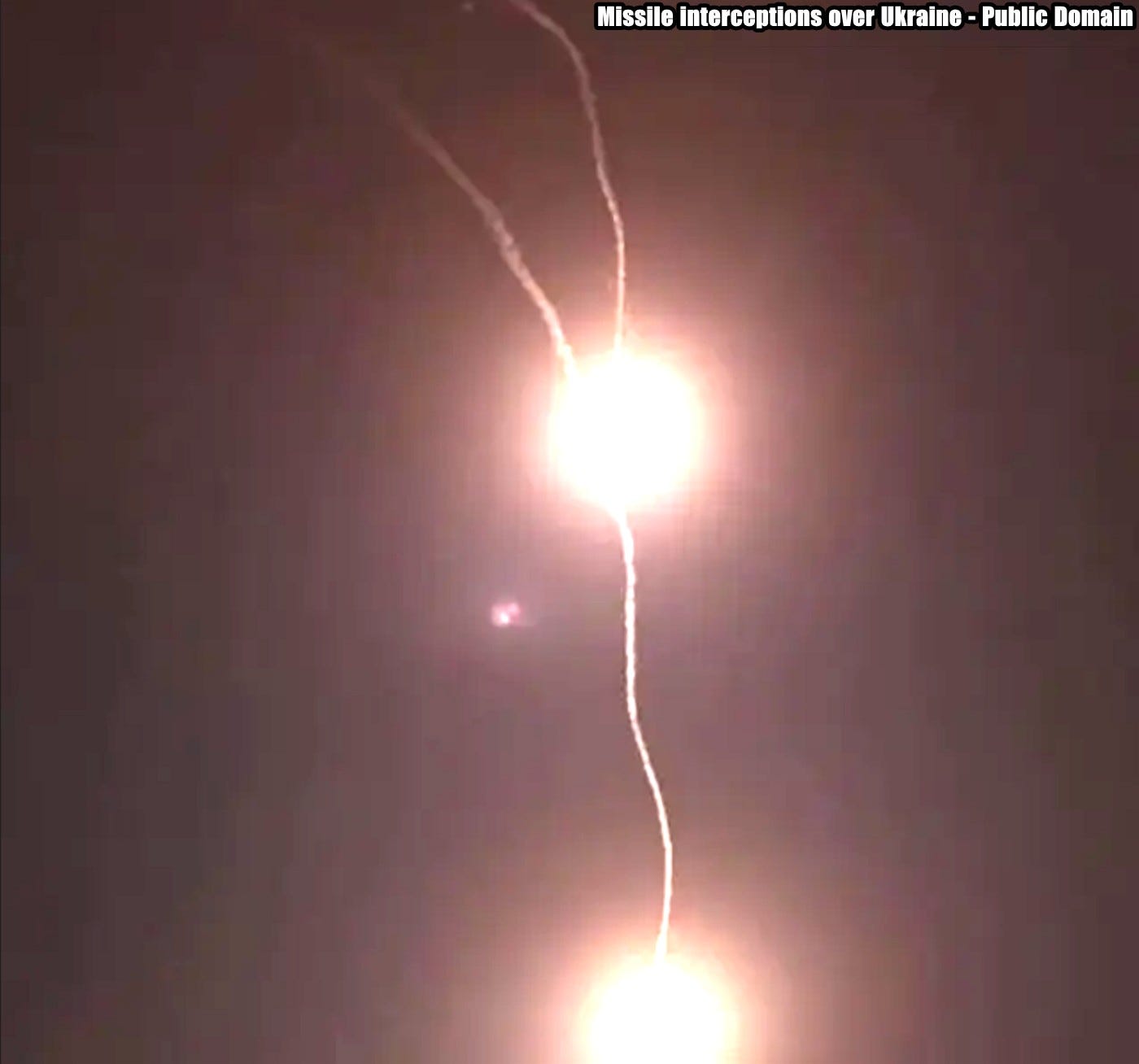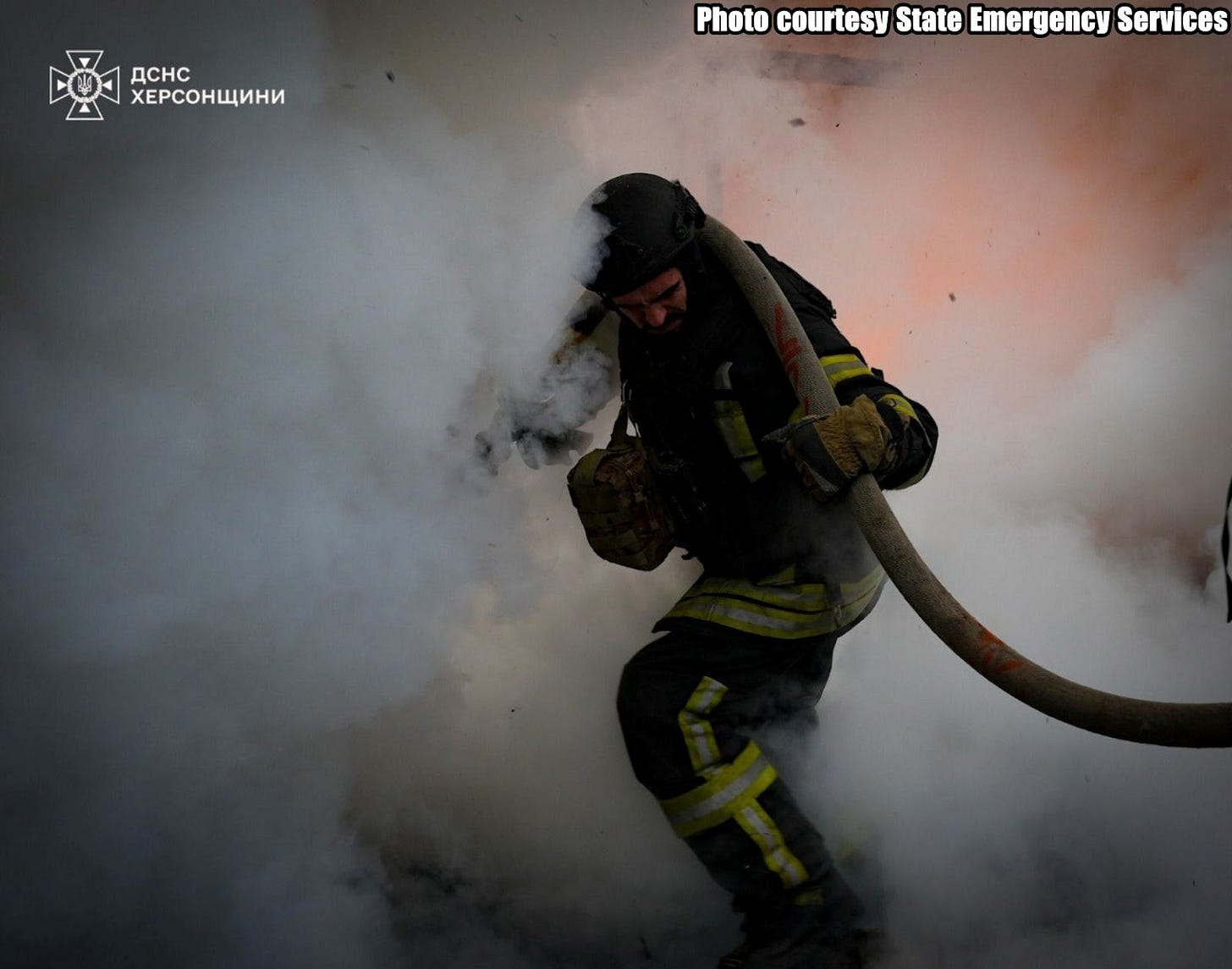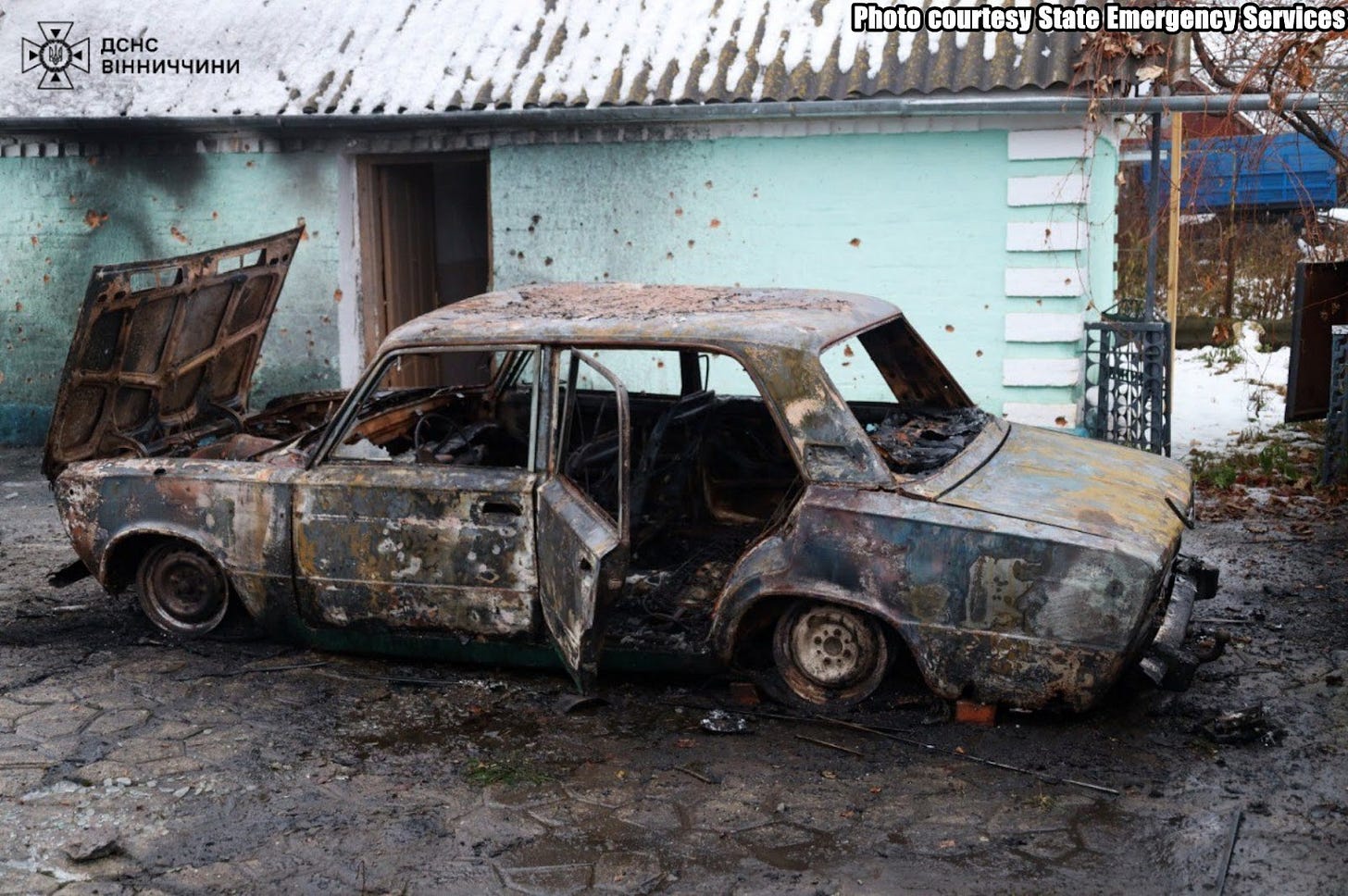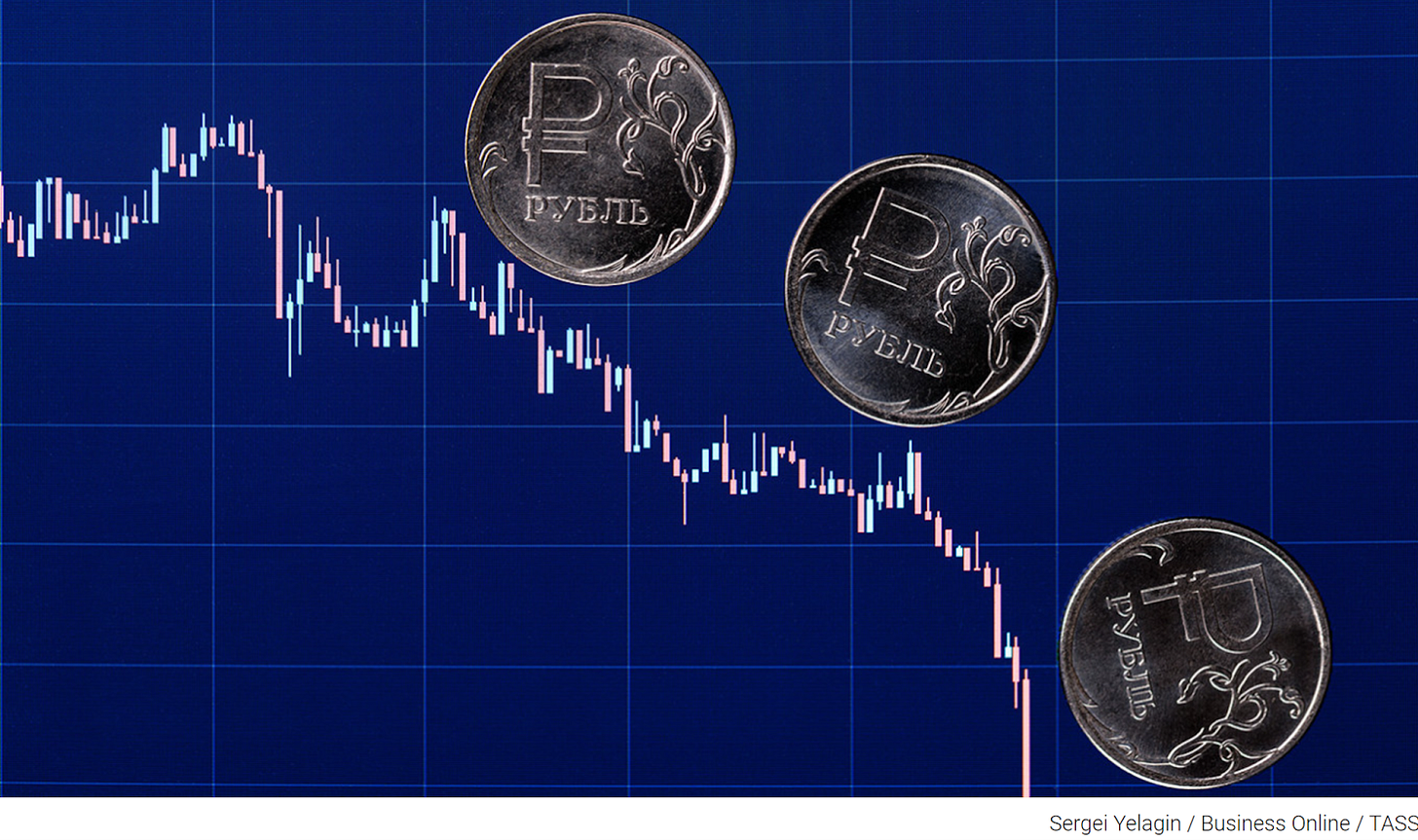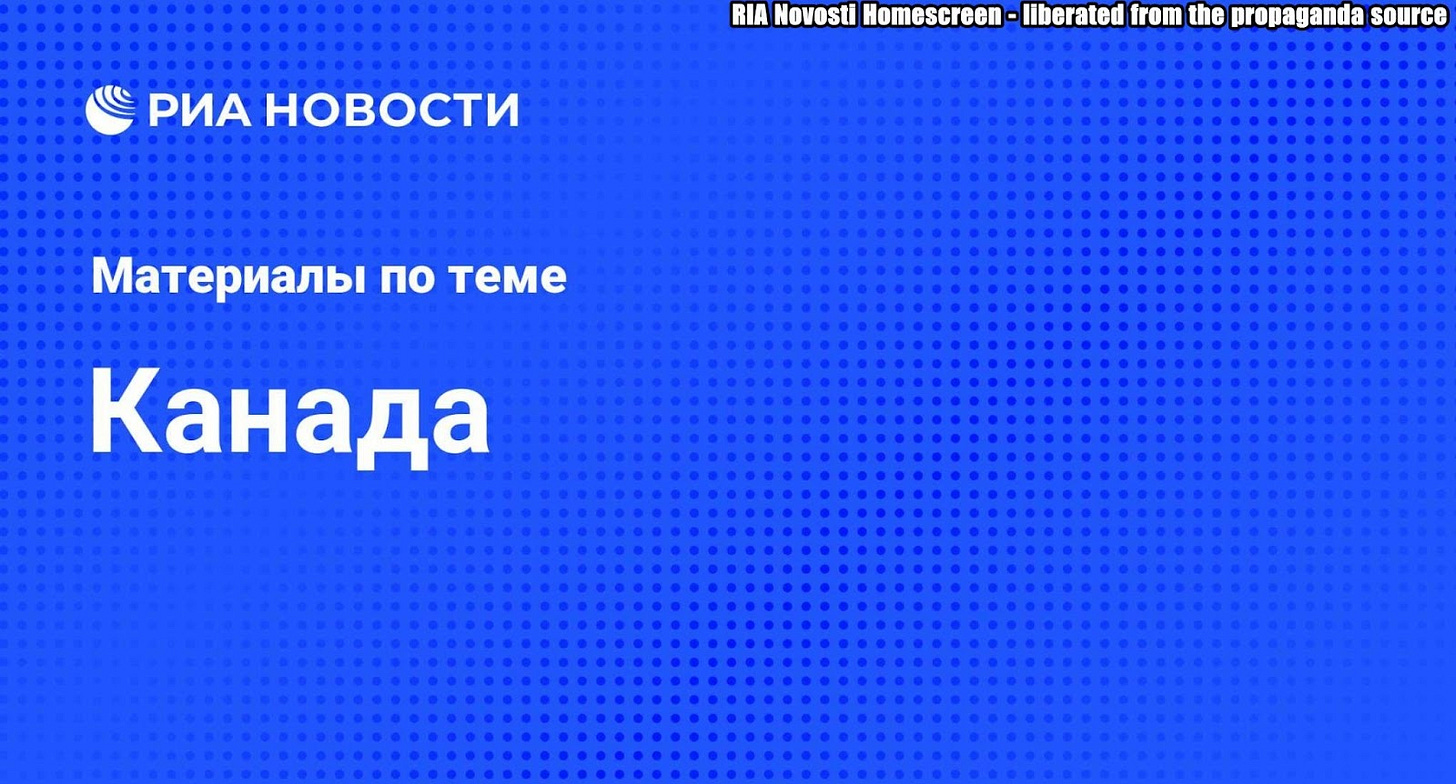Slava Ukraini! In early 2022 I began a Telegram channel aggregating news from a number of sources daily on the war in Ukraine. In June 2023 I began providing a daily draft for the Ukraine War Brief Podcast collecting news from over 70 sources daily, which formed the basis of the script. While the Podcast no longer exists I have continued to make this Brief available for my followers here on Substack for those who wish to keep up with the news from the war. A version of this Brief will also be made available on The People’s Media Substack for those who should choose to subscribe there.
All the latest news on the Russo-Ukraine War 6 days per week
ALONG THE CONTACT LINE
GSAFU Morning Report
The General Staff of the Armed Forces of Ukraine in its Operational Information update at 22:00 on stated that day 1009 of the full-scale invasion of the Russian Federation against Ukraine was about to begin.
During the past day, 150 combat engagements took place. Over the past 24 hours, the enemy carried out 11 air strikes, 648 drone strikes and almost 4,000 artillery strikes across the positions of Ukrainian forces.
At the same time, Ukrainian soldiers continue to inflict losses in manpower and equipment on the occupying troops, exhausting the enemy along the entire front line and continue to disrupt the plans of Russian occupiers to advance deep into the territory of Ukraine.
Air Force Daily Report
76 cruise missiles, 3 cruise missiles and 35 enemy UAVs were shot down
➖➖➖➖➖➖➖➖➖
On the night of November 28, 2024 (from 7:30 p.m. on November 27), the enemy attacked Ukraine with various types of missiles and attack drones.
In total, 188 air attack devices were detected by the Air Force's radio engineering forces:
- 3 S-300 anti-aircraft guided missiles from the Belgorod region. - Russian Federation in Kharkiv Oblast;
- 57 Kh-101 cruise missiles from Tu-95MS strategic bombers, launch area — Volgograd region. - Russian Federation;
- 28 Kalibr cruise missiles, launch area of the Black Sea;
- 3 guided air missiles Kh-59/69, launch area airspace over the Black Sea water area;
- 97 strike UAVs of the "Shahed" type and unmanned aerial vehicles of an unknown type from the regions of Kursk, Primorsko-Akhtarsk, Orel, Bryansk, Millerovo - Russian Federation.
The air attack was repulsed by anti-aircraft missile troops, aviation, electronic warfare units, mobile fire groups of the Air Force and the Defense Forces of Ukraine.
As of 10:30 a.m., it was confirmed that Ukrainian defenders had shot down:
- 76 Kh-101/"Caliber" cruise missiles;
- 3 guided air missiles Kh-59/69;
- 35 strike UAVs of the "Shahed" type and drones of an unknown type (62 enemy drones were lost in location).
The enemy's missile-drone attack was aimed at Ukrainian energy facilities.
The Russian Border Incursion
The Institute for the Study of War (ISW), a US based think tank, in its Nov 27 Russian Offensive Campaign Assessment reported that Russian forces recently advanced amid continued offensive operations in Kursk Oblast on Novr 27. Geolocated footage published on Nov 26 shows that Russian forces, reportedly elements of the Russian 104th Airborne (VDV) Regiment (76th VDV Division), advanced east of Nizhny Klin (southeast of Korenevo) during a roughly platoon-sized mechanized assault.
Russian milbloggers claimed that Russian forces also advanced near Darino (immediately southwest of Nizhny Klin) and that Ukrainian forces also counterattacked in the area. Elements of the Russian 106th VDV Division continue operating in Kursk Oblast, and its 51st VDV Regiment is reportedly conducting clearing operations near Darino and Nizhny Klin and elements of its 137th and 119th VDV regiments are reportedly conducting clearing operations and striking Ukrainian positions elsewhere in Kursk Oblast. Elements of the Russian 810th Naval Infantry Brigade (Black Sea Fleet [BSF]), 44th Army Corps [AC] (Leningrad Military District [LMD]), Rosgvardia Spetsnaz, and possibly elements of the 56th VDV Regiment (7th VDV Division) are reportedly operating in Kursk Oblast.
The Khortytsia operational-strategic group
(Responsible for the northeastern part of Ukraine. )
Kharkiv Sector: Over the last day Ukrainian Defense Forces repelled 3 Russian attacks in the area of Vovchansk and Tykhe. 1 engagement is ongoing.
Kupyansk Sector: Russian Forces carried out 17 offensive actions against Ukrainian defensive positions near Kolisynivka, Kruhlyakivka, Zahryzove and Zelenyi Hai.
Lyman Sector: Russian Forces carried out 4 offensive actions against Ukrainian defensive positions near Hrekivka, Novosadove and Torske.
Siversk Sector: In this sector, over the last day, there has been no significant change in the combat environment.
Kramatorsk Sector: In this sector, over the last day, there has been no significant change in the combat environment. Russian forces carried out 1 offensive action against Ukrainian defences in the vicinity of Bila Hora.
Toretsk Sector: Over the last day Russian forces carried out 6 unsuccessful offensive actions with air support near Toretsk.
The Tavria operational-strategic group
(Responsible for the central-eastern and southeastern part of Ukraine.)
Pokrovsk Sector : Over the last day in this sector, Russian Forces carried out 3 offensive actions against Ukrainian defensive positions in the vicinity of Myrolyubivka, Promin, Chunyshyne, Lysivka, Dachenske and Zhovte. 9 engagements are ongoing.
Kurakhove Sector: Over the last day in this district Russia conducted 36 offensive actions in the vicinity of Sontsivka, Berestky, Kurakhove, Dalnje, Hannivka, Romanivka and Yelyzavetivka. 6 engagements are ongoing.
Vremivka Sector: Russian forces made 18 attempts to break through Ukrainian defences in the vicinity of Novodarivka, Rozdolne,Rozlyvl, Sukhi Yaly, Kostiantynopolske and Trudove. 4 engagements are ongoing.
Orikhiv Sector: In this sector, over the last day, there has been no significant change in the combat environment.
The Odesa operational-strategic group
(Responsible for Kherson, Qırım, (also known as Crimea) and the Black Sea.)
Prydniprovsk Sector: In this sector, over the last day, there has been no significant change in the combat environment. Russian forces made 6 unsuccessful attempts to dislodge Ukrainian units from their positions.
TEMPORARILY OCCUPIED TERRITORIES
Nothing major to report.
THE HOME FRONT
Russia launches mass missile attack, explosions reported all over Ukraine
Russia launched a large-scale missile and drone attack against Ukraine the morning of Nov. 28, targeting energy infrastructure across the country, including the far-western regions. The Kyiv Independent reported at 10:57am local time
The Air Force announced a nationwide aerial alert after warning that Russia had launched seven Tu-95 strategic bombers. Explosions were reported in multiple cities, including Kyiv, Kharkiv, Mykolaiv, Odesa, Lutsk, and Rivne.
Local officials also reported strikes in Sumy, Chernivtsi, Vinnytsia, Khmelnytskyi, Ivano-Frankivsk, Lviv, and Volyn oblasts.
In Kyiv, debris fell in two districts, Dniprovskyi and Darnytskyi. According to Kyiv Mayor Vitali Klitschko, the debris damaged an enterprise in the latter district.
"The missiles approached Kyiv from different directions," Serhii Popko, the head of the Kyiv City Military Administration, said, adding that all aerial targets were shot down.
In Ivano-Frankivsk Oblast, which is over 1,000 kilometers (621 miles) from the Russian border, Russian forces attacked a critical infrastructure facility, Governor Svitlana Onyshchuk said.
In Chernivtsi Oblast, also located in western Ukraine, Ukrainian air defense shot down a missile. Several houses were damaged by falling rocket debris, local military administration reported.
One woman in Vinnytsia Oblast was injured in a missile strike, authorities said. The attack also damaged residential buildings.
A Russian missile hit local infrastructure in the town of Shostka, the Sumy Oblast Military Administration reported. The consequences of the attack are still being investigated.
The densely populated Kyivskyi district of Kharkiv was also struck by a missile during the morning attack, regional Governor Oleh Syniehubov said. Business and residential buildings were damaged. No casualties have been reported, and emergency services are at work on site.
Energy Minister Herman Halushchenko said that Russia struck a "massive blow" at the nation's power grid, with attacks on energy infrastructure occurring throughout the country. Ukrenergo, the state grid operator, announced emergency blackouts in multiple regions in an effort to safeguard the energy system from Russia's assault.
Russia has already begun redoubling attacks on Ukraine's power grid as the country enters its third winter at war.
Andriy Yermak, the head of Ukraine's Presidential Office, said on Nov. 28 that Russia was deliberately stockpiling weapons, including arms from North Korea, in order to launch mass attacks on cities and infrastructure.
"They stockpiled missiles for strikes on Ukrainian infrastructure, for warfare against civilians during the cold, during the winter," Yermak said.
President Volodymyr Zelensky said on Nov. 24 that Russia had launched more than 800 KAB-guided aerial bombs, nearly 460 attack drones, and more than 20 missiles over the past week.
Along with intensifying aerial strikes, Ukraine has recently faced another threat from Russia: a new intermediate-range ballistic missile (IRBM) dubbed "Oreshnik," which Russia launched in a Nov. 21 attack against Dnipro.
The attack triggered an emergency meeting of the NATO-Ukraine Council on Nov. 26 and renewed calls for advanced air defense systems from Western partners.
Russian attacks across Ukraine kill at least 5, injure 25 over past day
Russian strikes against Ukraine killed at least five civilians and injured at least 25 over the past day, The Kyiv Independent reported at 12:25 pm on Nov. 28 citing regional authorities.
Russia launched a mass combined attack against Ukraine during the night of Nov. 27-28. In the attack, Russian forces used three S-300 anti-aircraft guided missiles, 57 Kh-101 cruise missiles from Tu-95MS strategic bombers, 28 Kalibr cruise missiles, three Kh-59/69 guided missiles, and 97 drones, according to a report by the Ukrainian Air Force.
Ukrainian anti-aircraft missile troops, aviation, electronic warfare units, and mobile firing groups shot down 76 Kh-101 and Kalibr cruise missiles, three Kh-59/69 guided missiles, and 35 drones. Meanwhile, 35 drones were lost on the radars due to electronic warfare operations.
During the mass attack, Russian forces targeted several oblasts, including the capital of Kyiv. Critical infrastructure facilities were hit, prompting emergency power outages across the country.
A 16-year-old boy and a 90-year-old woman were wounded in an attack in Odesa Oblast. They were treated at the scene of the attack. Falling missile debris damaged six houses, according to Governor Oleh Kiper.
A woman in Vinnytsia Oblast was injured in the morning combined attack, said Natalia Zabolotna, deputy head of the regional military administration. The Russian strike against the region damaged residential buildings and destroyed an outbuilding.
Apart from the combined mass overnight attack, Russian forces also targeted 10 settlements in Kherson Oblast, including the regional center of Kherson. The Russian attacks resulted in the killing of one person and injuries to 14 others, local military administration reported.
In Kharkiv Oblast, a Russian FPV (first-person-view) drone hit a tractor in the village of Bilyi Kolodiaz, killing two men and injuring three others, according to Governor Oleh Syniehubov.
In Donetsk Oblast, one person suffered injuries in the city of Pokrovsk, while in the town of Kostiantynivka, two people were killed due to the Russian strikes, Governor Vadym Filashkin reported.
In Zaporizhzhia Oblast, a woman and two men were injured in the attacks against the Vasyliv district, local military administration said.
In Sumy Oblast's Khotyn community, a drone attack injured a civilian, according to local authorities.
RUSSIAN WORLD
How Far Can Russia’s Ruble Fall Amid Its Latest Tumble?
The Russian ruble has slid to its lowest levels against the dollar since the invasion of Ukraine and weakened against the Chinese yuan. The Moscow Times writes.
Moscow will likely be able to halt the freefall triggered by mounting sanctions pressure, but its value will continue to gradually decline in 2025, analysts say.
The Russian ruble tumbled to its lowest level since March 2022 on Wednesday, crossing 113 rubles per U.S. dollar on the Forex exchange markets.
Russia halted trading in dollars and euros on its leading financial marketplace, the Moscow Exchange (MOEX), in June in response to U.S. sanctions. Because the ruble is mostly traded on the Forex currency markets among various international players with limited participation of Russian companies, some analysts say that this benchmark is not a true indicator of the ruble's strength.
And yet, the ruble's decline is visible not just in the Forex currency markets but across the board.
Within Russia, rubles are exchanged between banks — or between banks and customers — for dollars and euros. The Central Bank publishes its official ruble exchange rate based on these transactions. Russian media report that it is possible to buy cash dollars at currency exchange offices in Moscow at a slight premium to the official rate.
The Central Bank's official ruble-dollar exchange rate rose to 108 on Thursday, up 3% from Wednesday.
The ruble also weakened against China’s yuan, which is still traded on the Moscow Exchange. The ruble fell below the mark of 15 per yuan on Wednesday, the first time since March 2022.
“The market related to the exchange of the Russian ruble is segmented and illiquid,” economist Sofia Donets said. “For now, the most reliable indicator of the exchange rate is probably the yuan exchange rate. The imputed rate, if we look at the cross rate of the yuan to the dollar, is now closer to 108, but the reality of rapid weakening [of ruble] is evident.”
Analysts have offered several explanations for the ruble's sudden downturn. Simply put, new Western sanctions and seasonal factors increased the demand for foreign currency, and Russian exporters did not sell enough currency to offset this increase.
The latest U.S. restrictions on Moscow on Nov. 21 target Gazprombank, the largest and hitherto most important The fresh U.S. sanctions threaten the Russian economy, particularly its foreign currency export earnings, said Maximilian Hess, founder of Enmetena Advisory and a fellow at the Foreign Policy Research Institute.
"The sanctions have played a key role by targeting the main vector of Russian energy payments and Chinese payment routes to and through China by targeting VTB Shanghai," Hess told The Moscow Times.
The new restrictions compound the secondary U.S. sanctions on the Russian financial sector announced last December, Hess said.
The potential end of Russia's pipeline gas supplies to Europe via Ukraine next year could also impact financial markets, he added.remaining non-sanctioned Russian bank used by Moscow for energy trade, among many other institutions.
The ruble's exchange rate contributes to inflation by raising the price of imported goods and making travel more expensive for Russians.
With 25% of Russia’s consumer goods imported from abroad, a 10% drop in the ruble exchange rate could add up to 2.5 percentage points to Russia's inflation rate, according to VTB’s Pyanov.
Meanwhile, Russia has already been battling elevated prices, with official projections estimating inflation to reach 8-8.5% this year — double the Central Bank’s target of 4%.
Previous ruble declines caused foreigners to invest in cheaper rubles in anticipation of a higher Central Bank key rate, while domestic production was boosted with consumers switching to cheaper homemade goods, economist Alexander Kolyandr said.
Today, however, the Russian market is out of bounds for international capital, while the country's overheated economy cannot increase production, Kolyandr wrote.
The ruble will stabilize "around current levels" in the next two to three months, but there will be no return to its pre-shock levels, economist Alexander Isakov wrote on Wednesday.
INTERNATIONAL NEWS
Germany Denies Residency Extensions for Russian State Media Employees
Authorities in Berlin have refused to extend the residence permits of three current and one former employee of Russian state media outlets, the state-run RIA Novosti news agency reported Thursday, citing an unnamed German official. The Moscow Times reports.
Two of the journalists work for Russia’s state broadcaster Channel One, which accused Germany of shutting down its Berlin bureau on Wednesday. Germany’s Federal Foreign Office denied that claim, suggesting the issue related to the journalists’ “residence rights.”
RIA Novosti, citing an unnamed official in the Berlin Senate, reported that the Berlin Immigration Office chose not to renew the residence permits of a Channel One correspondent and cameraman last week. That decision was allegedly based on EU sanctions adopted in December 2022, which, among other things, banned several Russian news outlets in the bloc.
While the decision is not legally classified as expulsion, RIA Novosti stated that Berlin’s refusal effectively prevents the journalists from working in Germany, describing it as “tantamount to expulsion.”
Russia’s Foreign Ministry announced Wednesday it would expel two employees of Germany’s ARD public broadcaster in retaliation.
RIA Novosti also reported that Berlin declined to extend a residence permit for a correspondent with Ruptly, a news agency owned by the Kremlin-funded RT network. The Berlin Immigration Office reportedly argued the journalist’s presence “threatens Germany’s interests” due to RT’s role in spreading “disinformation and propaganda to discredit the so-called West and the EU.”
The Ruptly correspondent, identified only as a Brazilian citizen, was first notified of the decision on Feb. 22. His appeal is currently under review by a higher administrative court.
In September, the Berlin Immigration Office similarly denied residency extensions for a former Rossiya Segodnya media group employee and his wife.
Ruptly, RT and RIA Novosti are all subsidiaries of Rossiya Segodnya.
MILITARY & TECH
Russia’s new IRBM missile examined
This article is summarised from one that appeared in Reuters on Nov. 28.
On Nov. 21, a new kind of Russian missile carrying six warheads struck Dnipro, Ukraine. Senior officials said it caused limited damage. But the first combat use of such a design — which Russian President Vladimir Putin called unstoppable — has drawn scrutiny from Western military experts.
The missile fired by Russia at Ukraine last week, hailed by Putin as a new kind of experimental hypersonic weapon, was actually an application of old technology used for many years in intercontinental ballistic missiles (ICBM), six military experts told Reuters.
The missile, which Putin said struck a Ukrainian military facility, was derived from the RS-26, an intermediate-range ballistic missile capable of carrying a nuclear warhead, which was tested five times but never entered service, according to the Center for Strategic and International Studies.
The new design had most likely removed a stage of the booster from the RS-26, reducing its range. It was noted that using the Oreshnik with conventional warheads was an expensive means "to deliver not that much destruction".
The missile incorporated a Multiple Independently-targetable Reentry Vehicle (MIRV) bus, something that is quite common in ICBMs.
The United States considered a program using ICBMs without nuclear warheads called Conventional Prompt Strike, but abandoned it because "it was stupid", said William Alberque, a visiting fellow at the Henry L. Stimson Center. A major problem with putting conventional warheads on ICBMs is that it is easy for adversaries to mistakenly think they are under nuclear attack - confusion that could accidentally lead to a nuclear conflagration.
Kapustin Yar, where the missile was launched, is only about 800km from the impact point.
Small gas thrusters allow the bus to maneuver above the atmosphere for precise targeting, Lewis said, noting that the "spider shaped" piece of debris appeared to include those. The other large section of wreckage contained guidance, fuel tanks and other electronics, he said. The bus allows for MIRVs, each of which carries a warhead and can hit a separate mark.
None of the technology in the Russian IRBM that hit Ukraine is novel but getting a close, hands-on look could yield interesting insight into the latest Russian missile designs.
The missile blasts off, propelled by its first-stage engines, accelerating quickly as it begins to roll and orient itself toward its programmed trajectory.
The missile’s first stage separates, dropping the dead weight of burned-out engines and empty fuel storage.
The MIRV bus separates from the upper stage, and after brief acceleration, will fly on a ballistic trajectory in space toward its objective.
The MIRV bus coasts through space toward the target area. It is at this stage the missile is most vulnerable to midcourse interception.
Just before releasing the warheads, the MIRV bus orients itself with onboard guidance systems so it can direct each of them toward a specific objective.
The six warheads fell to earth after they were dropped at separate targets by a component of the missile called the Multiple Independently-targetable Reentry Vehicle (MIRV) bus.
In an address on state television after the missile was launched, Putin said it was a direct response to strikes on Russia by Ukrainian forces with U.S. and British missiles. He warned the war could be escalating toward a global conflict, and that Russia could strike at military installations of Western countries supporting Ukraine.
A former Kremlin advisor, Sergei Markov, told Reuters the use of the weapon was symbolic, sending a message from Putin to the West: “back off”.
It was noted that the sheer speed of reentry was enough to cause damage even if the warhead were non-explosive material such as metal. The warheads descended on Dnipro at a steep angle, he noted, which implied the missile had been launched on a "lofted" trajectory: fired to an unusually high apogee, or maximum altitude, to reduce range.
In videos of the attack, each warhead appeared to drop smaller payloads that could be seen striking the ground. Wright said that if the missile used such submunitions, accuracy was less of a problem because: "it would distribute them over a wide area. It makes it useful for attacking large facilities".
Grumpy Here - In final summation the takeaways from this analysis are, none of the technology involved here is novel. This is basically an ICBM with a MIRV that has had its range reduced by removing the third stage and removing the nuclear warheads. The US worked on a similar project but abandoned it as illogical.
This weapon is extremely expensive to manufacture and in its current condition Russia is incapable of manufacturing these at a scale that would make any strategic difference in this war.
This was a stunt, basically meant to terrorise Ukraine.
That’s it for today’s Brief folks if you would like to keep up with events in Ukraine daily please consider subscribing.
Feel free to share this update with your friends. Heroyam Slava!







